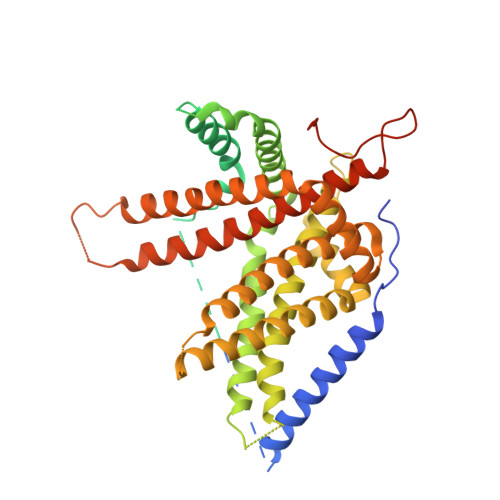Rational exploration of fold atlas for human solute carrier proteins.
Xie, T., Chi, X., Huang, B., Ye, F., Zhou, Q., Huang, J.(2022) Structure 30: 1321-1330.e5
- PubMed: 35700727
- DOI: https://doi.org/10.1016/j.str.2022.05.015
- Primary Citation of Related Structures:
7WWB - PubMed Abstract:
The solute carrier (SLC) superfamily is the largest group of proteins responsible for the transmembrane transport of substances in human cells. It includes more than 400 members that are organized into 65 families according to their physiological function and sequence similarity. Different families of SLCs can adopt the same or different folds that determine the mechanism and reflect the evolutionary relationship between SLC members. Analysis of structural data in the literature before this work showed 13 different folds in the SLC superfamily covering 40 families and 343 members. To further study their mechanism, we systematically explored the SLC superfamily to look for more folds. Based on our results, at least three new folds are found for the SLC superfamily, one of which is in the choline-like transporter family (SLC44) and has been experimentally verified. Our work has laid a foundation and provided important insights for the systematic and comprehensive study of the structure and function of SLC.
Organizational Affiliation:
Westlake Laboratory of Life Sciences and Biomedicine, Key Laboratory of Structural Biology of Zhejiang Province, School of Life Sciences, Westlake University, 18 Shilongshan Road, Hangzhou 310024, Zhejiang Province, China; Institute of Biology, Westlake Institute for Advanced Study, 18 Shilongshan Road, Hangzhou 310024, Zhejiang Province, China; Westlake AI Therapeutics Lab, Westlake Laboratory of Life Sciences and Biomedicine, 18 Shilongshan Road, Hangzhou 310024, Zhejiang Province, China.


















